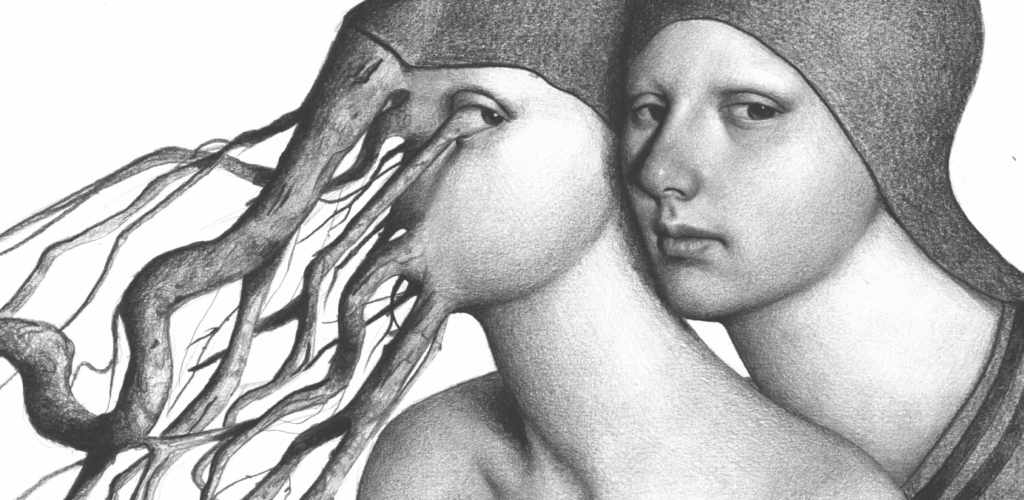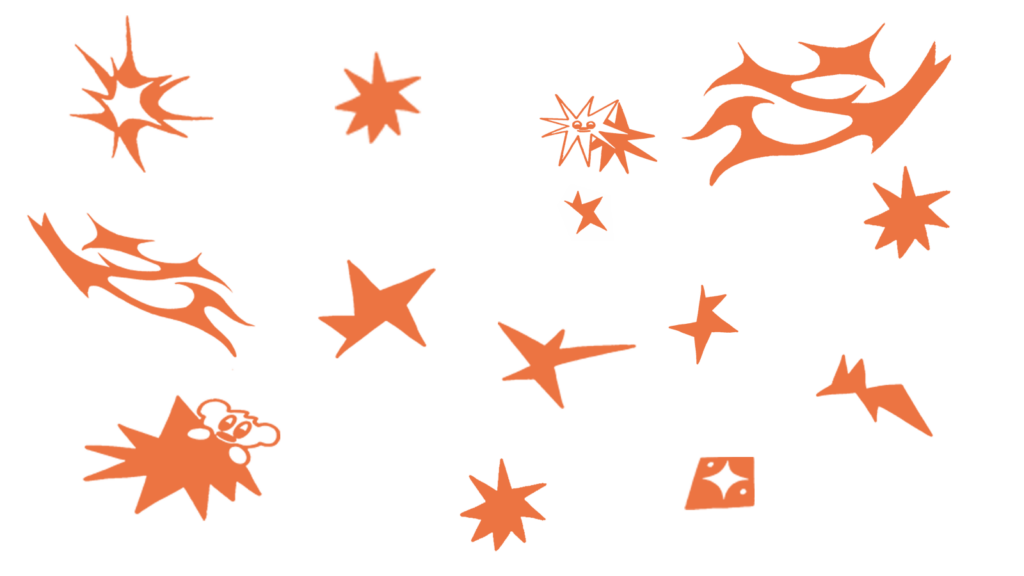“I’m not into true crime, I’m in true crime.”
Being the owner of a gym came with extra responsibilities, like the dreaded clean-up. Over time, I found that the menial task of mopping was therapeutic. Perhaps it helped me feel a sense of control, something that had eluded me for the previous ten years. It also forced me to be more social, something that I had purposefully avoided. While obsessively organizing dumbbells, I could casually join conversations with members lamenting their bosses or their kids’ schools.
One evening in 2014, a newer member named Brook was animatedly talking about a podcast she listened to on her way to work exploring a crime that had happened in Baltimore. I asked over my shoulder, “What’s a podcast?” Although the form emerged in the mid-2000s, I didn’t have the slightest idea what she was talking about. Brook explained, then asked if I was into “true crime.” I stopped what I was doing and turned toward her: “I’m not into true crime, I’m in true crime.”
On February 9, 2004, my sister Maura vanished off the side of the road in rural New Hampshire without warning or reason. She has never been seen again. Maura’s mysterious disappearance has made international headlines for decades. She disappeared the same week Facebook launched, and her case is widely considered the first missing persons case of the digital age. Her story is arguably one of the most-followed missing persons cases in the world.
Coincidentally, the term “podcast” was coined by journalist Ben Hammersley in a Guardian article two days after Maura vanished. Now, nearly two decades later, the true crime genre consistently tops podcast charts. According to a survey conducted by the Pew Research Center in 2023, about a quarter of the top-ranked podcast titles in America tell true crime stories.
I sit in a unique position. I’ve not only lived through the evolution of digital media, but have also experienced for myself the impact it can have on real-life tragedies. As a person unwittingly thrust into true crime, I know that awareness can be pivotal in solving these cases. In fact, without it, I fear my sister’s case may languish in a filing cabinet forever. But social media and podcasts also facilitate the spread of misinformation. With so few answers available, my sister’s case was ripe for the latter. I refer to it as a storyteller’s dream: simply fill in the gaps with whatever narrative you want to push. This all happens at the expense of the subject, a voiceless, missing woman unable to defend herself and the shattered family she left behind. Families like mine are often blinded by desperation and therefore easy prey for people who use our tragedies as content-generation machines.
Unfortunately, that’s precisely what began to happen a couple years after the conversation with Brook in my gym. Podcasts started to cover my sister’s story, and while the majority were well-intentioned, many perfunctorily regurgitated familiar bits of harmful misinformation and half-truths to craft a sensationalized version of the case. I usually stumbled upon them by chance, as no warning was offered to my family—the real people at the center of the tragedy. It’s incredibly traumatizing to hear strangers flippantly talk about the worst experience of your life without an ounce of empathy or consideration for the lasting impact of their words.
I listened to some on my morning runs. Perhaps this was masochistic, but it helped me feel connected, or at least aware of the discourse, in hopes that I might one day have the opportunity to combat the noise with better information. One day, two miles into a four-mile route, I heard a stranger say the most horrific things about my sister and my family. I started to run faster; my heart raced, almost as if I was trying to outrun the words echoing in my ears. Fighting back tears, I gasped for air. I stopped and my gasps turned to quiet sobs. It was a mix of frustration, grief, and a complete loss of control.
I finished my run that day and decided that I had to do something. I started appearing on various podcasts as a guest to try to dispel some of the outlandish claims and gain a sense of agency. As an introvert, it was the last thing I wanted to do, and my reticence is evident in those early interviews. I would work myself up into an anxious mess, sometimes having to stop the interview as my voice wobbled or a panic attack ensued. But I felt I didn’t have a choice. I was my missing sister’s voice. Today, I’ve lost count of how many interviews I’ve given. I’m fighting to center my sister in the coverage and give her some semblance of the humanity that so much true crime coverage had stripped away from her.
Eventually, I realized I wasn’t alone, and that other family members whose lives are mined for true crime experienced the same type of exploitative coverage. There is a gap between creators and consumers and the humans at the center of these tragedies—ones we can’t seem to escape, even as years pass. The popularity of true crime means at any moment our loved ones’ tragedies could be hastily dissected in an endless loop of retraumatization.
We can’t stop this genre from growing, but we can ask that creators start from a place of empathy. The goal is to dampen the voyeurism and replace it with an approach that is more sophisticated than one staked entirely on escapism or pure entertainment. In 2022, I launched the Engage With Empathy campaign in an effort to cover these tragedies with C.A.R.E.: Centering the victim, Avoiding harmful misinformation, Researching responsibly, and Engaging with empathy. This has helped tremendously, and in recent years I’ve witnessed a positive change in true crime podcasting. Grassroots indie podcasts led by survivors and families themselves such as Voices for Justice, True Consequences, Surviving Skye, Media Circus, and The Survivor Squad, to name a few, are transforming the genre. They’ve inspired big-name creators to change how they cover tragedies, offering their platforms to the people most affected, and painting a more compassionate, victim-focused picture. In turn, listeners are rejecting unethical, sensationalized content by voting with their downloads. As an example, my voice was absent when two of the biggest true crime podcasts covered my sister’s case. One unilaterally pulled the episode and apologized for repeating poorly sourced misinformation. The other offered me the opportunity to set the record straight—a good-faith effort in holding themselves accountable, which is all families are asking for.
After careful contemplation, I found myself coming back to the same question. Whose story is it to tell? It’s my sister’s, and in her absence, who better to tell it than me? So I immersed myself in endless Googling to figure out where I could even begin. I picked the brains of people already established in the field and, with a self-bestowed YouTube University graduation certificate, I scheduled my first interview. My dad flew down to my house in Virginia where I constructed a makeshift recording studio in my guest bathroom. (This was a bad idea; the audio quality was horrendous as our voices echoed off the porcelain.) Thankfully, my studio was mobile, so we relocated to the dining room. With a blanket hanging from the chandelier to disrupt reverberation, I hit record.
Over the next several days we captured over eight hours of audio. The roller coaster of emotions I felt sitting next to my dad was at times unbearable; I diverted my eyes when I sensed the tears coming. Over the next couple of months, there were a lot of tears. I set off to interview those closest to the investigation—many in New England, where Maura was last seen. I then spent hundreds of hours meticulously researching, writing, and editing.
My desire to do right by my missing sister drove me—sometimes to the point of exhaustion. Revisiting the intricate details of her case was like resetting a misaligned bone fracture. It hurt, but it was necessary for proper healing. It also reminded me of the depths of the wounds that time has allowed to scar over. But doing so on my own terms, providing context and nuance to each detail, was far less triggering than having to passively listen as a stranger did it. It finally gave me that sense of agency I so desperately wanted.
I closed my gym during Covid, but I still work out and linger around after class just like my members used to, chatting people up and making friends. I’m now the one asking the question: “Are you into true crime podcasts?” I almost always receive an affirmative reply. I welcome the near future when I’ll be able to tell them, “You should listen to mine.”
![]()
Julie Murray is an advocate for her missing sister Maura Murray. In 2022, she launched the Engage With Empathy campaign to unite creators with survivors of real-life tragedies. Julie looks forward to sharing her sister’s story in her own words in a project set to launch in the coming months. For more information visit mauramurraymissing.org.









